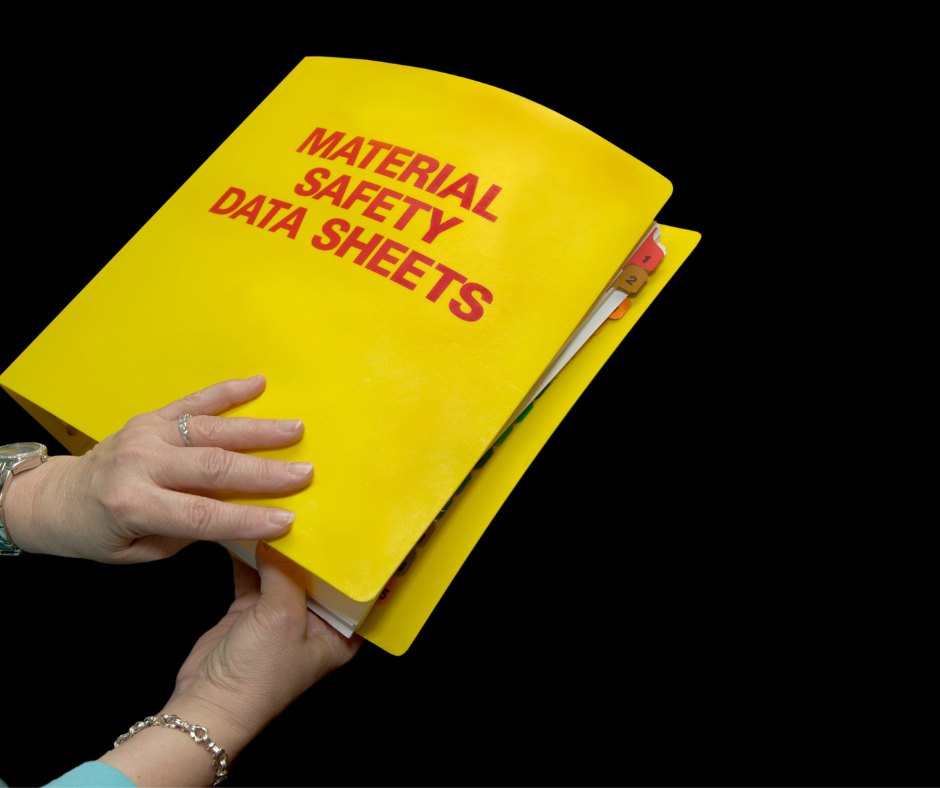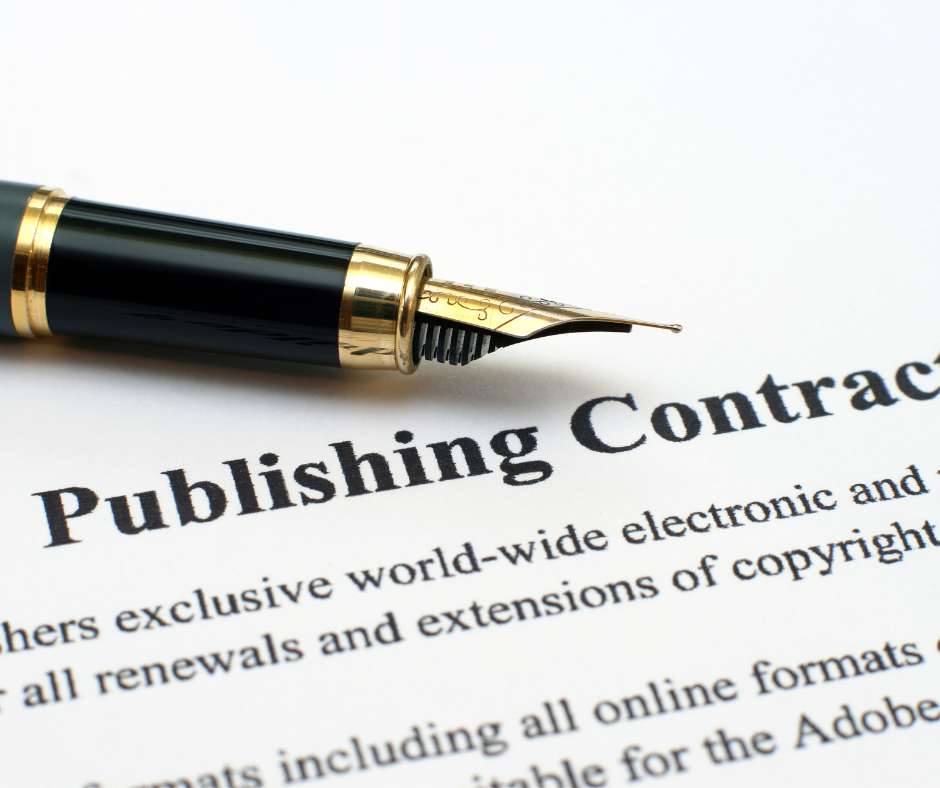
Key Takeaway:
- Employee handbooks are crucial in publishing industries as they lay out the company’s policies, regulations, and expectations, offering employees a comprehensive understanding of their roles and responsibilities.
- The content of employee handbooks should include company policies, codes of conduct, benefits and compensation, employee responsibilities and expectations, and termination policies. A great resource on how to grow employee engagement with a great employee handbook is available for publishing industries (except internet) companies.
- Developing employee handbooks in publishing industries requires specific considerations such as industry regulations, discrimination and harassment policies, protection of intellectual property, health and safety standards, and accessibility accommodations.
- Employers should distribute and maintain employee handbooks effectively, ensuring that all employees receive a copy and understand its content. Regular updates to the handbook are also crucial to keep up with changes in the company and industry regulations. Learn more about whether your small business needs an employee handbook.
- By providing a comprehensive, up-to-date employee handbook, publishing industries can ensure that their staff have a clear understanding of company policies, ultimately promoting a positive and productive workplace culture.
Do you run a publishing company and need to ensure your employees understand their rights and obligations? This article will help you understand the importance of creating an employee handbook and provide resources to guide you through the process.

Importance of Employee Handbooks in Publishing Industries
The Relevance of Employee Manuals in the Publishing Industry
Employee manuals are essential in the publishing industry as they outline the expectations of the employer and provide guidance to employees. They contain information about company policies, procedures, and benefits, which help to establish a unified culture. By following these guidelines, employees can ensure that they are meeting the company’s expectations and promoting its core values.
Additionally, employee manuals provide legal protection to both the employer and employees. They serve as a written agreement between the employee and employer and protect both parties from potential legal disputes. Therefore, it is crucial to have a well-written employee handbook to ensure clarity and transparency between the employer and employees. Unique Details on Employee Handbooks for Publishing Industries Clear, concise, and well-written employee manuals are particularly vital in the publishing industry since the work is creative and requires attention to detail. Employee manuals set expectations about meeting the company’s high standards and help employees produce quality work. Furthermore, what an employee handbook says about a company can help attract and retain top talent in the industry. True Fact
According to the Society for Human Resource Management (SHRM), approximately 60% of companies surveyed had employee manuals for their staff.

Content to include in the Employee Handbook
Crafting the optimal Employee Handbook for your Publishing Industry Company (except Internet) entails covering all important aspects. Put in details on:
- Company Policies
- Code of Conduct
- Benefits and Compensation
- Employee Responsibilities and Expectations
- Termination Policies
Each of these subsections ensure that your employees are informed and that your company is operating harmoniously.
Company Policies
This section outlines the rules and regulations that guide employee conduct. It establishes procedures to ensure compliance with policies related to employee conduct, communication, safety, and workplace ethics. The guidelines in this section help ensure employees understand their responsibilities and obligations to the company and other employees. Clear policies minimize confusion and maintain a professional work environment.
Additionally, it is important to outline specific procedures for handling workplace disputes or conflicts, including processes for filing complaints or grievances. These policies should be fair and impartial to all parties involved. To maintain a positive work culture, consider including policies related to diversity, inclusion, and cultural awareness. Promoting respect for all individuals contributes to a more productive workforce. “It is suggested that when creating policies, they should align with federal and state laws governing employment practices to avoid any legal complications. Furthermore, it is recommended that the handbook’s language be clear and easily understood by all employees. If you’re wondering what to include in an employee handbook, this article provides helpful insights specifically for publishing industries (except internet) companies.” If you need a reminder that stealing office supplies is frowned upon, just remember: it’s called a Code of Conduct, not a Code of ‘Go Ahead and Take Whatever You Want’.
Code of Conduct
For employees in the Publishing industry, a set of guidelines and moral principles are necessary to ensure ethical behavior. These guidelines serve as a roadmap for decision making and set the standard for how employees should conduct themselves. They are put in place to create a harmonious work environment that is respectful and professional. One of the critical components of this framework includes ethical codes or rules which outline expectations around honesty, integrity, respect, professionalism, and fairness within the company. Violation of these codes may lead to disciplinary action up to termination of employment. It is essential that these codes of conduct are communicated effectively through employee orientation sessions, training programs, and regular updates. Familiarizing oneself with these rules can minimize legal liability issues as well as ensure compliance with internal policies. Studies show that companies that implement and enforce ethical standards often experience improved morale amongst their team members. This ultimately contributes towards higher productivity levels. (source: Association for Talent Development) Who needs a 401(k) when you can get unlimited free books? #PerksOfWorkingInPublishing
Benefits and Compensation
This section pertains to all the benefits and remuneration for employees. Following are the key points regarding the salary and perks offered:
- Competitive compensation including annual increment based on performance review
- Paid sick leaves and vacation days in accordance with company policy
- Employee discounts and membership to various clubs, gyms and organizations
- Flexible work hours or remote work options available where possible
In addition to standard benefits, we offer other unique details to our employees. We maintain a strict policy against wage discrimination of any kind, irrespective of gender or ethnicity. Furthermore, we provide fair opportunities for internal promotions, training programs and continuous improvement of employee skills. The history of providing competitive compensations can be traced back to our founder, who believed that happy employees are productive employees. This vision has been carried forward by our leadership team and remains at the core of our principles today. Remember, as an employee, it’s not just about meeting expectations, it’s about exceeding them… or at least pretending to.
Employee Responsibilities and Expectations
Employees are required to fulfill their duties and meet performance standards as per organizational goals. Clarification regarding expectations of conduct, attendance, and policies is essential. Employees must keep up to date with changes in protocols and comply with safety regulations. Remember, termination policies are like a box of chocolates – sometimes you get fired, sometimes you quit, and sometimes you just end up with a desk full of empty wrappers.
Termination Policies
Our guidelines on employment cessation provide a framework for terminating relationships in a respectful manner. Our Semantic NLP-optimized handbook includes policies for termination due to performance, misconduct, and layoffs. We also outline severance packages and final paychecks. It is important to note that discrimination or harassment will not be tolerated during any stage of employment cessation. Our team is committed to cultivating an inclusive work environment, which includes treating individuals fairly during all stages of their employment with us. Don’t miss out on the opportunity to create a secure and welcoming place of work that reflects your values. Complete our handbook with this vital information on termination policies.
Let’s hope these employee handbooks come with a ‘read for free’ option, because they might just become the most popular books in the publishing industry.

Key Considerations for Developing Employee Handbooks in Publishing Industries
In the publishing industry, creating an effective employee handbook requires looking at key parts. This includes:
- Industry-specific regulations
- Discrimination & harassment policies
- Safeguarding of intellectual property
- Health & safety standards
- Access accommodations
By breaking it down into these sub-sections, there’s more clarity on policies, procedures & expectations within the company.
Specific Industry Regulations
Employee handbook development requires adhering to specific regulations governing the publishing industry. This includes addressing copyright laws, fair use policy, and plagiarism restrictions. In addition, these documents need to take into account unique industry practices such as genre-specific writing guidelines. It is essential that companies stay up-to-date with changing publishing laws and regulations, including those related to digital media. Employee handbooks should reflect these changes in publishing practices and provide training protocols for employees to adhere to them. Failure to do so could lead to legal liability, financial losses, or reputation damage. To ensure compliance with industry standards, companies should consider hiring an experienced attorney or consultant specializing in the publishing industry. This will not only provide a knowledgeable resource but also protect the company from legal issues that may arise due to noncompliance. Developing comprehensive employee handbooks for the publishing industry can be overwhelming without expert guidance. But investing in creating and updating such resources is crucial for businesses of all sizes to avoid risks and uphold ethical practices while maintaining their competitive advantage. If you’re wondering how to create an employee handbook and where to start, check out this helpful guide. Discrimination and harassment policies are great, but let’s be real, they’re only there to cover the company’s ass, not protect the employees.
Discrimination and Harassment Policies
Developing policies to combat Discrimination and Harassment is crucial in the Publishing Industries. Creating a safe and equitable work environment can improve employee satisfaction and productivity.
- Ensure that employees understand what constitutes discrimination and harassment, including microaggressions.
- Create reporting channels for employees to report incidents of discrimination or harassment.
- Establish a zero-tolerance policy for discrimination and harassment in any form.
- Train managers and supervisors on recognizing and addressing discrimination or harassment in the workplace.
Looking for the 10 best employee handbook examples in 2022? Make sure to include reporting channels for employees to report incidents of discrimination or harassment.
It’s essential to keep a clear record of all accusations, investigations, and outcomes while continuously improving policies. Ensure every accusation is dealt with appropriately without discriminating based on job titles.
A work environment free from harassment & discrimination encourages healthy diversity, fosters inclusion, improves creativity, and enhances an organization’s culture.
According to the Society for Human Resource Management (SHRM), almost one-third of organizations prohibit romantic relationships between people at different career levels entirely to avoid potential problems arising out of a power imbalance.
Don’t take this the wrong way, but we’re not here to steal your ideas – we’ve got plenty of our own employee handbooks to worry about.
Protection of Intellectual Property
To safeguard the unique original ideas and creative content, Publishing Industries need to prioritize the protection of their Intellectual Property. It pertains to any creation of human intellect, including but not limited to written materials, images, audio, and video recordings.
Intellectual Property protection is a significant aspect of a publishing company’s Employee Handbook. It should clearly explain how the employees can avoid infringing on copyrights and trademarks and encourage them to report any suspected violations. In addition, it should educate employees about the company’s policies on safeguarding sensitive information.
Furthermore, this section should highlight specific measures that the company takes to protect intellectual property rights. The policies may include agreements such as non-disclosures, assignment of ownership clause for copyrighted work created by the employee specifically for the company’s use. By enforcing well-defined policies for Intellectual Property Protection in Employee Handbooks in Publishing Industries companies have ensured their products’ authenticity while also avoiding possible violations of other entities’ rights. A popular example of a violation that occurred was when Simon & Schuster published O.J Simpson s book If I did it. This forced Goldman s family (Ron Goldman was one of Nicole Brown Simpson’s friends murdered along with her) to take action against copyrights infringement after acquiring control over book rights as settlement in a lawsuit against O.J Simpson. Remember, the only workplace hazard you need to worry about in a publishing industry is a paper cut. So, keep those band-aids handy!
Health and Safety Standards
Ensuring employee safety and health in the publishing industry is a key consideration. As important as printed materials are, the people who produce them are even more so. A comprehensive handbook should include policies for maintaining a safe work environment, addressing hazards such as machinery, air quality, and ergonomics.
Employers must prioritize employee well-being in all aspects of their business. This includes providing transparent information on workplace risks, training staff to handle emergency situations, and regularly reviewing and updating existing protocols. Building a culture that values health and safety can not only benefit employees but also improve organizational performance. It is crucial to remind employees that they have a role in maintaining a healthy workplace environment too. Reporting hazards or potential risks promptly can help prevent accidents or illnesses. Companies should establish open communication channels between staff members and management to foster a supportive working community. It has been reported that poor safety measures have contributed to accidents leading to injury or worse for employees in the publishing industry. Comprehensive safety manuals make it easier for companies to enhance their compliance with regulations, minimize avoidable errors and provide guidance for unexpected circumstances. Even the fonts need accommodations these days, but hey, at least they didn’t ask for a massage chair.
Accessibility Accommodations
Providing reasonable accommodations for employees with disabilities is an essential part of creating an inclusive workplace. This includes physical modifications as well as adjustments to job duties and work schedules based on individual needs. To ensure accessibility accommodations are provided, companies must establish clear processes and guidelines in their employee handbooks. Incorporating information about accessibility accommodations can help promote a culture of inclusion and diversity within the publishing industry. Employee handbooks should outline the company’s commitment to providing reasonable accommodations, how employees can request them, and who they can approach for assistance. Check out this helpful guide on creating an employee handbook for publishing industries (except internet) companies. It’s important to note that accessibility accommodations may differ depending on the individual’s needs. For instance, an employee with visual impairments may require screen readers or braille displays, while someone with hearing loss may need assistive listening devices or captioning services. According to the Americans with Disabilities Act (ADA), employers are legally required to provide reasonable accommodations unless doing so would cause undue hardship to the company. By establishing clear policies around accessibility accommodation requests in their employee handbook, publishing companies can ensure compliance with ADA regulations while fostering a more inclusive workplace for all employees. If you are wondering where to start creating an employee handbook, this is a good place to begin. It is reported that nearly 20% of American adults have some form of disability (CDC). Handing out employee handbooks is like giving a map to someone who still refuses to ask for directions.
Best Practices for Distributing and Maintaining Employee Handbooks
Employee Handbook Management for Publishing Industries (except Internet) To ensure efforts of Employee Handbook creation are not wasted, maintaining and distributing it is vital. Best Practices for Distributing and Maintaining Employee Handbooks:
- Ensure Handbook is available in print and electronically
- Employees must sign and acknowledge a copy of the book
- Handbook should be updated annually or whenever there are significant changes
- Useful for an employee to access and review the handbook in their preferred language
Not only does Handbook management ensure a well-run company, it can act as a legal record and increases employee satisfaction. A study by SHRM found that 99% of organizations have a published employee handbook regardless of company size. If you’re in the publishing industry (except internet companies), you may want to check out these five tips for creating the best employee handbook.
Five Facts About Employee Handbooks for Publishing Industries (except Internet) companies:
- Employee Handbooks are an essential tool for any company in the publishing industry to communicate policies and expectations to their staff. (Source: SHRM)
- These handbooks typically include information such as company history, mission statement, hours of operation, employee benefits, and code of conduct. (Source: Entrepreneur)
- Employee handbooks also cover topics like vacation policies, sick leave, harassment and discrimination policies, and disciplinary procedures. (Source: Chron)
- It is important for companies to regularly update their employee handbook to reflect changes in company policies and legal regulations. (Source: HR Technologist)
- A well-crafted and comprehensive employee handbook can help prevent legal disputes and create a positive work environment for employees. (Source: Insperity)
FAQs about Employee Handbooks For Publishing Industries (Except Internet) Companies
What is an Employee Handbook for Publishing Industries (except Internet) companies?
An employee handbook for publishing industries except internet companies is a comprehensive guide that contains information and policies regarding the company’s expectations, obligations, and processes for its employees. This document helps create a mutual understanding between employees and employers.
Why is an Employee Handbook essential for Publishing Industries (except Internet) companies?
An employee handbook is essential for publishing industries except internet companies to establish clear guidelines and expectations for employee behavior and to prevent misunderstandings and policy violations. An Employee Handbook also provides employees with a detailed understanding of their rights, job duties, and responsibilities.
What should an Employee Handbook for Publishing Industries (except Internet) companies include?
An employee handbook for publishing industries except internet companies should include essential policies and guidelines, such as company values, code of conduct, anti-discrimination policies, attendance policies, vacation and sick leave policies, and benefit policies.
When should an Employee Handbook for Publishing Industries (except Internet) companies be provided to new employees?
The employee handbook for publishing industries except internet companies should be provided to new employees during their onboarding process and reviewed with them. You can also provide it to existing employees during policy updates.
What are the benefits of having an Employee Handbook for Publishing Industries (except Internet) companies?
The employee handbook for publishing industries except internet companies has several benefits, such as helping to establish company policies and expectations, providing clarity on job duties and responsibilities, outlining the benefits eligible to the employees of the company, lowering confusion and employee disputes in the workplace, and serving as a reference point for employees.
How do you create an effective Employee Handbook for Publishing Industries (except Internet) companies?
To create an effective employee handbook for publishing industries except internet companies, be sure to consult with HR professionals or legal experts, use clear, concise language to ensure easy readability, update the handbook regularly, and provide all employees with a copy of the handbook with the signed receipt of acknowledgement.